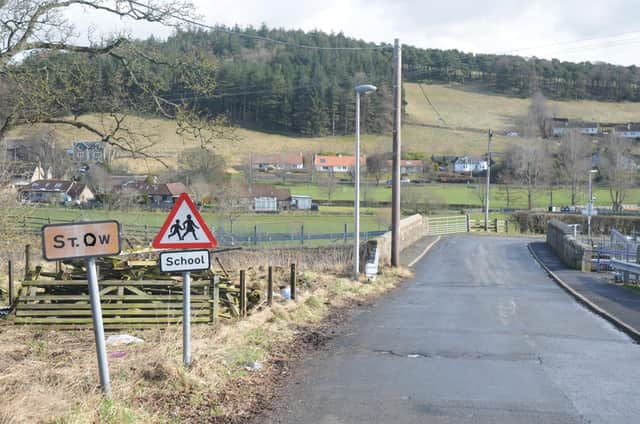Stow changes name to honour ancient saint


Local historians have uncovered part of Stow’s early history from a little known Dark Age illuminated manuscript, the Book of Ydnew, that has come to light in a national archive. This beautiful manuscript, probably created by the monks of Ydnew in Wales, tells the stories of some of the more obscure early Celtic saints, and it is here the story of St Ow has been found.
Ow was a holy illuminator and master stonemason responsible for many of the early churches in the region, including, possibly, the forerunner of St Mary’s of Wedale. It was while Ow was constructing a chapel and wellhead around a spring when one of the stones he was working fell down and crushed his left toe.
Advertisement
Hide AdAdvertisement
Hide AdAt this, Ow let out a loud exclamation (his name has even entered the English language as a common expletive, often repeated under similar circumstances), but the resulting infection that set in led to his early and unfortunate death.
The waters of the well, however, immediately after Ow’s accident, began to perform miracle cures for patients experiencing foot disabilities, leading to his ultimate canonisation as St Ow. This is also the reason why Stow (unlike that much later village in the Cotswolds in England) is pronounced Stow as in ‘bow’, and not Stow as in ‘bow’.
Following the successful campaign to commemorate the village’s venerable origins and restore its holy founder to his rightful place as one of the more important saints of the early church, the village has now reverted to its original ancient name of ‘St Ow’ and the village signs have been hastily changed.
“This is very exciting indeed,” a local village spokesperson told The Southern. “Our proud village has often been overlooked by visitors to the region, and it is hoped that by commemorating St Ow in this way we will not only restore the village to its place on the heritage trail, but will increase significantly the number of visitor attractions in our village.”
Advertisement
Hide AdAdvertisement
Hide AdAnother said: “This has come at a very important time for us. We are nearing the end of the restoration of the village’s Station House, as well as the production of walking leaflets around the village. As we emerge from lockdown, it is fitting that the life of St Ow has become another important addition to our attractive village.”